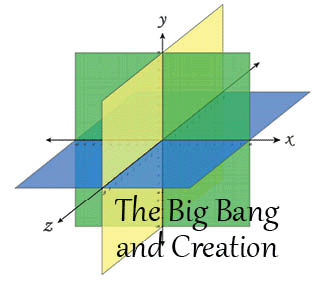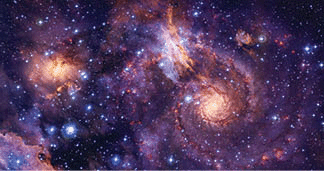Return to 1st Quarter 2022 articles.

We receive many interesting questions from our readers, and recently we received this one about the big bang and creation:
Dr. John Mather, head of the new telescope project, explains that the “Big Bang” is not correctly understood as the universe having one exact beginning point. Rather that its beginning was everywhere at once as evidenced by galaxies all moving away from each other, and residual heat of the “big bang” being somewhat uniform everywhere we look.
We could blame this misunderstanding on Dr. Fred Hoyle, who coined the term “big bang,” but as teachers of physics and astronomy, we are probably guilty of contributing to it. When we hear the term “big bang,” we think of an explosion. An explosion assumes some material existed, and it blew up like a bomb. That is a mistaken perspective. The big bang did not start with a singularity that already existed. The modern understanding of the big bang is that space and time came into existence in a form we call “space/time.”
We struggle with the concept of the big bang and creation because we cannot envision a condition where neither space nor time existed. We live in a three-dimensional universe and are familiar with X, Y, and Z dimensions on a Cartesian graph. We know that we can plot any of those dimensions against time. If we move along the ground in direction X at a certain speed, we can plot the distance moved against the elapsed time. When a rocket goes straight up, you can plot Y against time. There is a third direction at right angles to both X and Y that we call Z, and we can plot it against time. But what is time? It is a fourth-dimensional quantity that you cannot define. You can say it is “what keeps everything from happening at once,” but that is not a definition. It is a consequence of time.
The big bang concept agrees with Genesis 1:1 that space and time began, but not as an explosion. When space was created, everything embedded in space was also created. Only action from dimensions beyond our own (X, Y, Z, and time) could do that. So as we consider the big bang and creation, we must ask what could be the source of creation? Whatever it is, it would have to exist outside of the space/time dimensions.
You can argue that it was not God, but that does not hold much water. We must account for the design we see in the cosmos, and chance does not even try to do it. The big bang is an excellent proof of creation by God. The Bible describes God as an intelligence outside of space and time who created space and time.
We do not need to understand everything about creation to have faith in God. However, science strongly reinforces the adage that “the more you know of the creation, the closer you get to God.” As science advances in its understanding of the design of the cosmos, the existence of God becomes more and more evident.

Picture credits:
© V_ctoria. Image from big stock.com
© Outer_space. Image from big stock.com
Scripture links/references are from BibleGateway.com. Unhighlighted scriptures can be looked up at their website.
